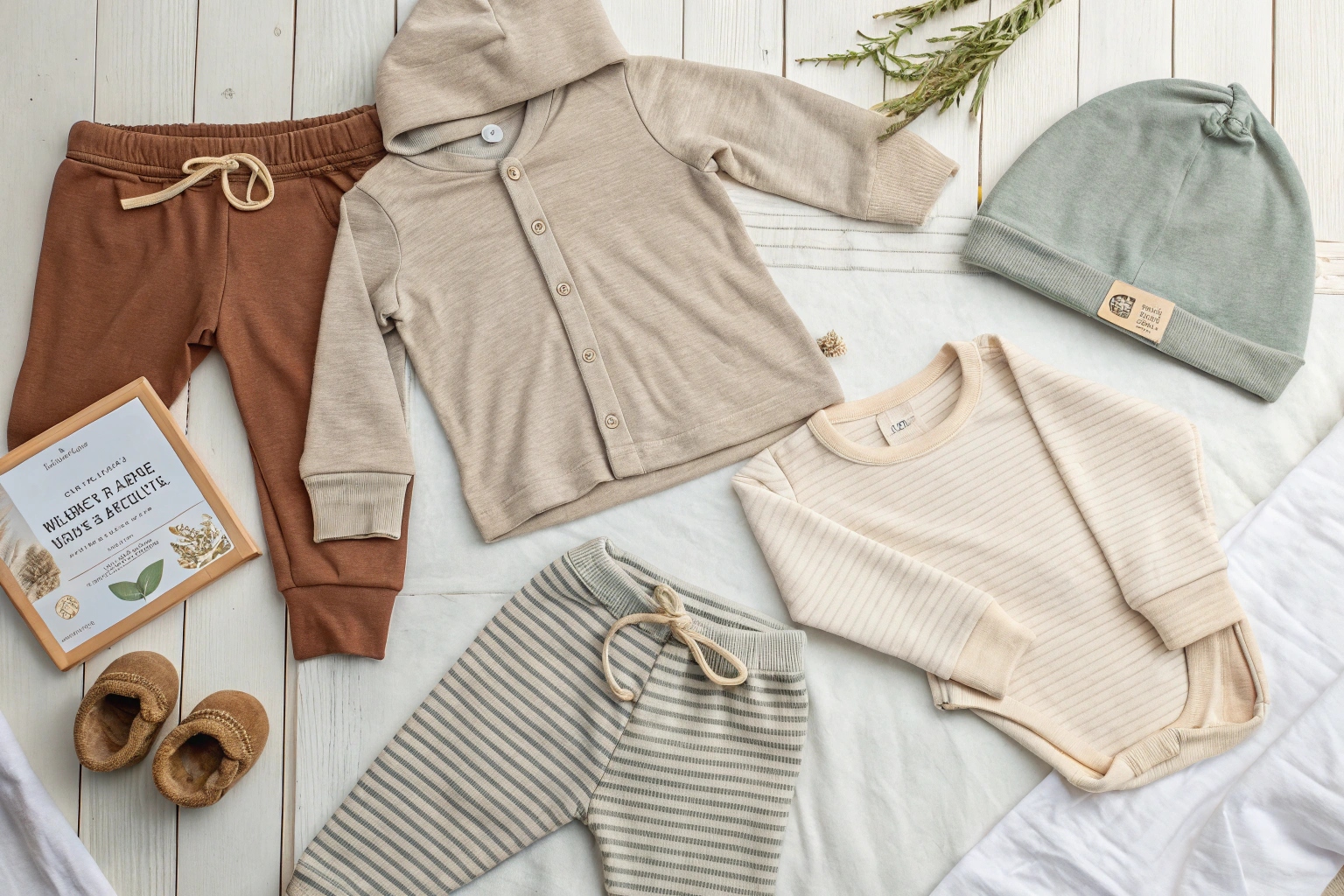Do your kids complain about itchy clothes, or do you notice colors fading after just a few washes?
Choosing the right fabrics for children’s capsule wardrobes is key to comfort, durability, and long-term value—helping parents buy less, and brands build trust.
In this article, I’ll share which materials perform best, how they align with modern parenting priorities, and why fabric quality is the backbone of any smart capsule collection.
Top Breathable Fabrics for Kids’ Capsule Wardrobes
Do your kids sweat easily, or get uncomfortable wearing synthetic materials?
The best breathable fabrics for kids are natural fibers like cotton, bamboo, and linen, which keep the skin cool, dry, and irritation-free.
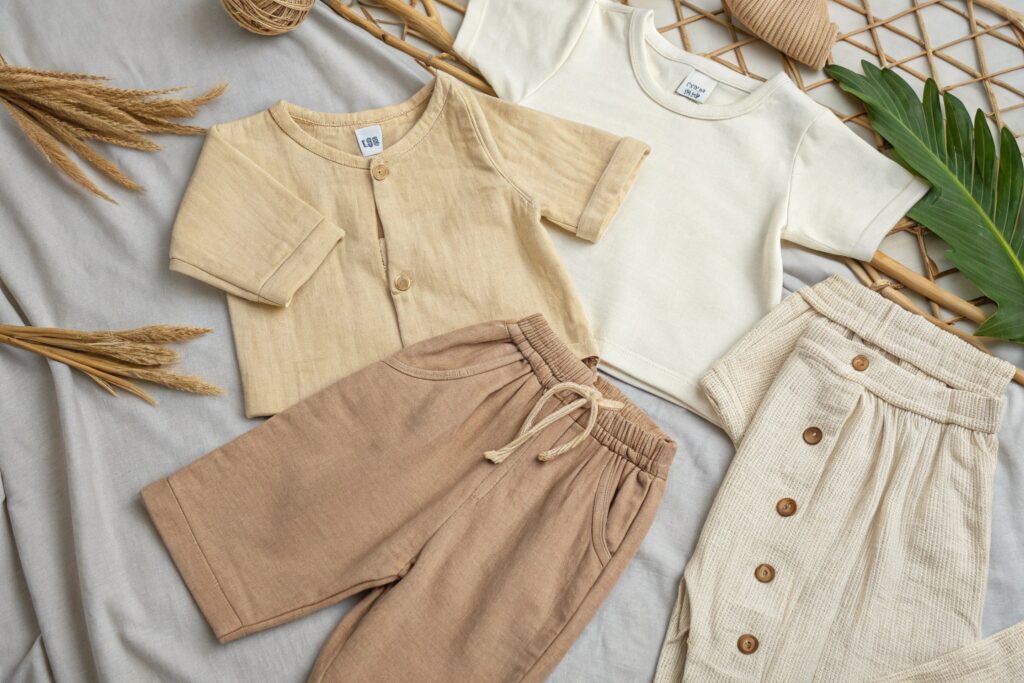
Why is breathability important for children’s clothing?
Children are constantly moving. Their bodies heat up fast and they sweat more than adults, especially during play or nap time. Breathable fabrics help:
- Regulate body temperature
- Reduce skin irritation and rashes
- Prevent dampness that can lead to discomfort or odor
We recommend that brands sourcing capsule collections start with breathable fibers for all base layers—tees, leggings, pajamas, and undergarments. These pieces are worn closest to the skin and used most frequently.
What are the top breathable fabrics used in kidswear capsules?
| Fabric | Properties | Best For |
|---|---|---|
| Organic Cotton | Soft, lightweight, skin-safe | T-shirts, leggings, onesies |
| Bamboo Rayon | Breathable, moisture-wicking, smooth | Pajamas, undergarments |
| Linen Blends | Cool, quick-drying, textured | Summer wear, dresses |
At Fumao Clothing, we test these materials rigorously. Our partners often tell us how much parents appreciate garments that stay fresh and comfortable—even after long school days or playground runs.
Best Sustainable Materials for Children’s Clothing
Are you trying to reduce your environmental impact while maintaining quality?
The most sustainable fabrics for kids’ capsules include organic cotton, recycled polyester, TENCEL™, and hemp—all offering lower environmental footprints and strong performance.
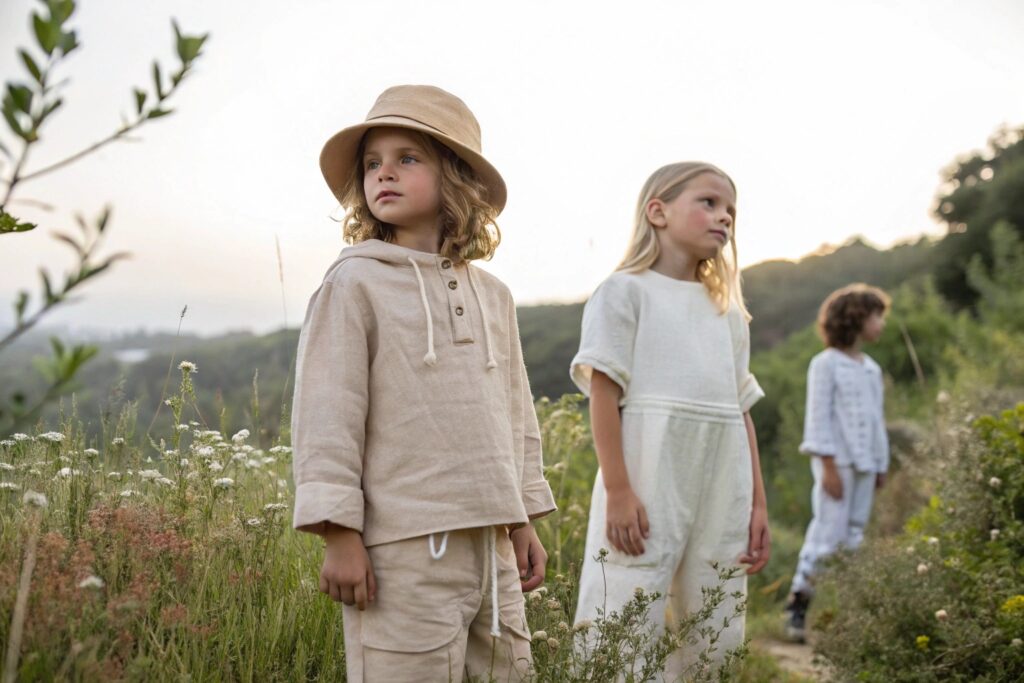
What makes a fabric truly sustainable?
It’s not just about being organic. A fabric is sustainable when it:
- Requires less water or energy to produce
- Uses fewer or no harmful chemicals
- Can be recycled or biodegrades naturally
- Is sourced and processed ethically
Sustainability also includes longevity. A shirt that lasts 50 washes is more sustainable than one that ends up in a landfill after 5.
Which sustainable materials are best for children’s capsule items?
| Fabric | Eco Benefits | Use in Capsule |
|---|---|---|
| Organic Cotton | Grown without pesticides | All basic wearables |
| Recycled Poly | Repurposed from plastic waste | Jackets, vests |
| TENCEL™ Lyocell | Made from renewable wood pulp | Tops, dresses, innerwear |
| Hemp | Grows quickly with minimal input | Shorts, summer rompers |
Fumao Clothing helps brands integrate these into their SKUs without compromising softness or durability. We’ve even helped clients earn OEKO-TEX® and GOTS certifications for full supply chain compliance.
How to Pick Soft and Durable Fabrics for Kids
Do you find that clothes shrink, fade, or tear too quickly after purchase?
Look for fabrics that balance softness with structural integrity—like cotton-spandex blends, French terry, and brushed fleece—to make capsules both kid-friendly and long-lasting.
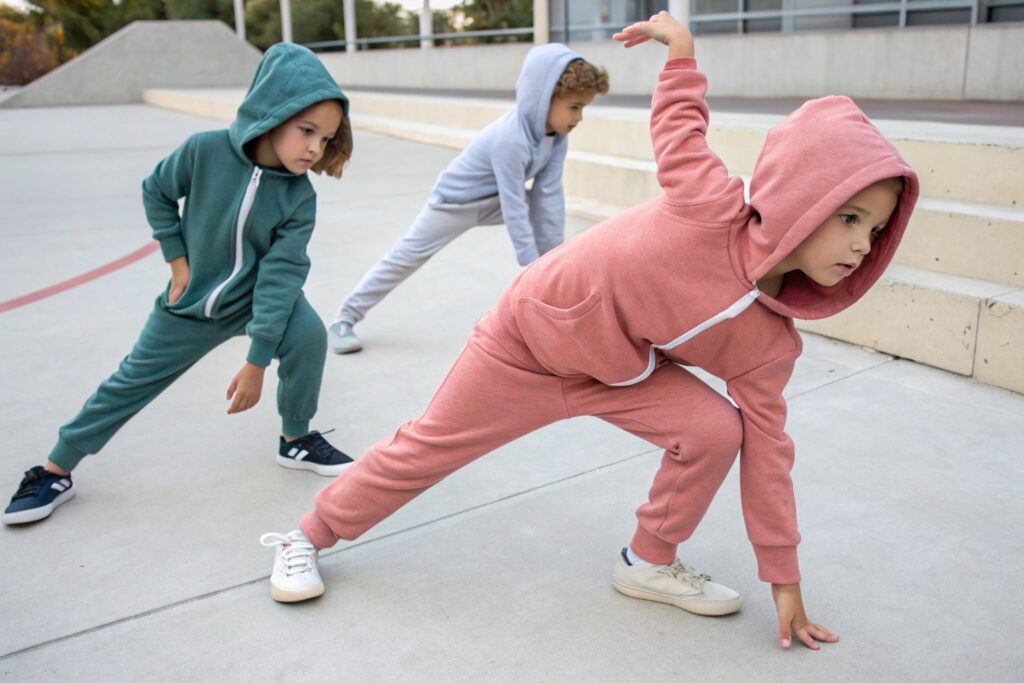
What features should you prioritize when selecting capsule fabrics?
For parents, softness is non-negotiable. For brands, durability is critical. The goal is to meet both needs. Look for fabrics that:
- Withstand frequent machine washing
- Retain color and shape after wear
- Resist pilling and tearing
- Feel smooth and gentle to the touch
One of our brand partners once told me: “We had fewer returns after switching to cotton blends you helped source—the clothes just held up better.”
Which fabric types offer the best of both worlds?
| Fabric Type | Softness | Durability | Best Use Cases |
|---|---|---|---|
| Cotton-Spandex Blend | High | High | Stretch leggings, onesies |
| French Terry | Medium | High | Joggers, hoodies |
| Brushed Fleece | Medium | High | Sweatshirts, jackets |
| Modal + Cotton | Very High | Moderate | Sleepwear, loungewear |
In our production lines at Fumao, we pre-shrink test fabrics and assess colorfastness before we commit them to bulk. This ensures each piece in a capsule performs as promised—for parents and for retail buyers.
Fabric Guide for All-Season Kids’ Capsule Collections
How do you choose materials that work across different weather conditions?
All-season capsule fabrics are mid-weight, breathable, and layer-friendly—like interlock cotton, modal blends, and light fleece—to offer flexibility across climates.
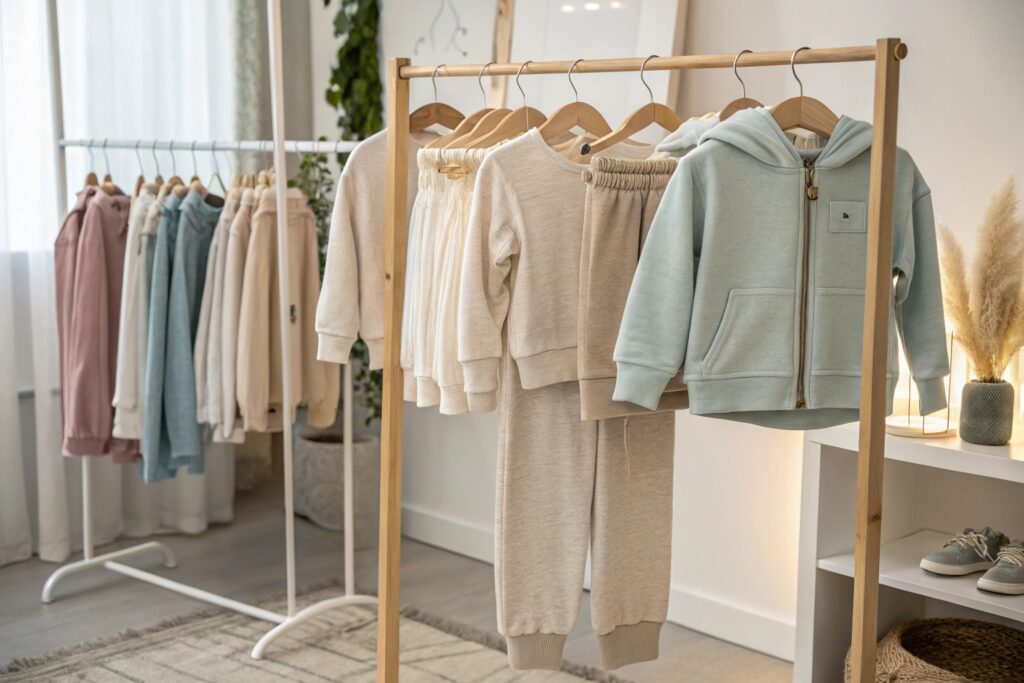
What makes a fabric “all-season” in kidswear?
To reduce wardrobe size, fabrics need to serve in both warm and cool seasons. That means:
- Not too thin, not too thick
- Works well with layers
- Holds up to frequent laundering
- Comfortable in both dry and humid conditions
Designing your capsule this way saves buyers from restocking every 3 months. It also makes international shipping easier—one style can be sold in multiple markets year-round.
What are the most reliable all-season fabric options?
| Fabric | Climate Fit | Capsule Role |
|---|---|---|
| Midweight Cotton | All seasons | T-shirts, bottoms |
| Cotton-Terry Mix | Fall to Spring | Joggers, pullovers |
| Bamboo-Cotton | Summer to Fall | Pajamas, shirts |
| Light Fleece | Late Fall/Winter | Outerwear, layering items |
At Fumao Clothing, we help clients build all-season capsule lines that work from LA to London. We offer climate testing, fabric consultation, and optimized layering plans so that buyers like Ron get more from each piece they source.
Conclusion
Fabric choice is the backbone of every great kids’ capsule wardrobe. Pick breathable, sustainable, soft, and seasonally flexible materials to create clothing kids love to wear and parents love to buy.

